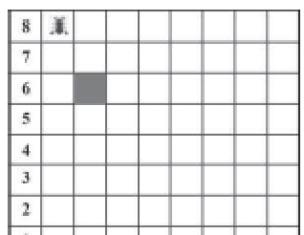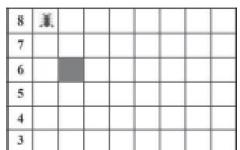Seems very complicated. Those who have studied English suffer especially: as you know, adjectives in it are not declined at all. However, if you compare the German language with the Russian language, then it turns out that everything is not so scary.
It is carried out in three main types, and the first has three more varieties: hard, soft and mixed declination. The latter has three more types depending on the last consonant in the root.
A detailed familiarization with the rules of the Russian language helps most language learners understand the German declension of adjectives faster and easier. After such an acquaintance, the German language seems simpler and more understandable, and there is even sympathy for those who are forced to learn this “terrible” Russian.
There is one fundamental difference: if in Russian the declension of adjectives depends on the word itself (on its gender, number and case), then in German, in addition to this, it also depends on the article, which, as is known, has no analogues in Russian.
The declension of German adjectives can be divided into three types:
- Weak - it is really “weak”, the form of the adjective almost does not change. This inflection is used after the definite article - basically the article changes.
- Strong declension - after and pronouns meaning some kind of “uncertainty”.
- Mixed declension - if there is no article.
Here we will look at the weak declension of adjectives
Its rules are quite simple. As you can see in the table, most adjectives end in -en, the rest end in -e. This type of declension is characteristic only of adjectives that are used after:
- After pronouns that are similar to the definite article: diser (this), jener (that), jeder (every), welcher (which), solcher (that), mancher (other), derselbe (that one), derjenige (that one). Of course, these also vary by birth. Here they are all given in the masculine gender.
As you study this information, pay attention to how the endings of certain articles and nouns change. As you can see, the declension of adjectives is the easiest to remember. Another important point- column " Plural". In this number, adjectives that come after the following words are declined according to the weak type:
- Definite article (der, die, das).
- The same pronouns mentioned above, and some others. Of course, these plural pronouns will have other forms: diese (these), jede (those), welche (which), alle (everyone), beide (both), solche (such), manche (some), dieselben (those the very ones), diejenigen (the same ones), sämtliche (all).
- And also (note!) after the pronoun kein and such as mein (my), unser (our), as well as others possessive pronouns. Here a natural question arises about how adjectives are declined in singular after such pronouns? For example, how would it be meine schöne Frau (my beautiful woman) in We answer: in any reference book, look at the table of mixed declension, because after these pronouns there are singular adjectives. In number they tend to be of the mixed type.
m. genus and. genus Wed genus Plural
N Der alt e Mann Die schon e Frau Das neu e Haus Die breit en Fenster G Des alt en Mann es Der schön en Frau Des neu en Houses Der breit en Fenster D Dem alt en Mann Der schön en Frau Dem neu en Haus Den breit en Fenster n A Den alt en Mann Die schon e Frau Das neu e Haus Die breit en Fenster

After this, look at other tables in any German language reference book:
- in the singular in the absence of an article (strong declension).
- Table of declension of singular adjectives after indefinite article(mixed declension).
- It is also worth looking separately at the declension of adjectives in although it can also belong to the two types already mentioned earlier: weak and strong. After the indefinite (weak declination - we have already given it in the table) and the definite article (strong declination).
- Declension
Please note that there are regularities in the declensions of adjectives: somewhere, one way or another, there must be endings of the definite article. In the table above, the adjectives are already preceded by the definite article. Consequently, adjectives no longer need their endings, which is why the rules of the weak declension are so simple. And vice versa, with a strong declension, when there is no article at all before adjectives, the endings of the adjectives change like the endings of the definite article.

And some tips on how to remember these dry tables:
- Learn in detail the declination of the definite article.
- Read this article and look through the tables in the reference book carefully once and take the test - there are plenty of them on the Internet. After you complete or fail the selection tasks correct form adjective, you'll feel the need to memorize it all, and you'll also know where to look at adjective inflections more closely. The secret of any effective learning: first the problem, then its solution. And not vice versa.
- Take on German. This can be any text on a topic that interests you with parallel translation. Try to compile all the declination tables yourself, and then compare them with the reference book. It will take time, but after this you will most likely no longer need to look at the reference book at all to clarify how this or that adjective is declined.
A German adjective is a part of speech that expresses a characteristic of an object, answering Welcher's questions? Welche?Welches? (which? which? which? which?).
Declension of adjectives
An adjective changes when it is a modifier of a noun. The type of declension depends on the type of article and pronoun. Declension can be of three types: weak, strong, mixed. Through the declension of an adjective, you can determine the case, number and gender of a noun. The endings in the declension of an adjective can be expressive or neutral. An adjective receives a neutral ending if the endings of the pronoun or article are expressive and vice versa. That is, in the “article – adjective – noun” scheme there can be only one expressive ending.
1. Strong declension (no article)
The strong declension is used when a noun does not have an article or pronoun. In this case, the adjective plays the role of the definite article and takes on its ending.
2. Weak declension (definite article)
The weak inflection of an adjective is used with the definite article or with the pronouns dieser (he), jener (he), jeder (every), solcher (such), welcher (which), mancher (some), which have the inflection of the definite article. If the form of the article is initial, the ending of the adjective is neutral (-e), if the form of the article is changed, the ending is expressive (-en).

3. Mixed declension (indefinite article)
The adjective will have a mixed declension if the indefinite article is used, the pronoun kein (no one, no one) or the possessive pronouns mein (my), dein (your), unser (our), euer (your) are used. The mixed declension is used only with a singular number.

In the plural, there are only two types of declension for adjectives: strong and weak. If there are several adjectives with a noun, they receive the same declension. The rule for declension of adjectives applies to ordinal numbers and participles.


DEGREES OF COMPARISON OF ADJECTIVES
U qualitative adjectives and adverbs there are three degrees of comparison: positive (der Positiv), comparative (der Komparativ) and superlative (der Superlativ).
Comparative degree = positive degree + suffix –er
Superlative = positive degree + suffix -(e)st
For example: positive degree - schön (beautiful), comparative degree - schöner (beautiful), superlative degree - Der Schönste (the most beautiful).
Most adjectives form comparative degrees without an umlaut. Monosyllabic adjectives comparative and superlative degrees, which have such root vowels a, o, u form a degree of comparison with umlaut. Such adjectives include: alt (old), lang (long), grob (rough), arm (poor), scharf (sharp), dumm (stupid), hart (hard), schwach (weak), jung (young), kalt (cold), stark (strong), kurz (short), krank (sick), warm (warm). Positive and comparative adjectives are used in short form to denote the nominal part of the predicate, superlative adjectives - both in short and inflected forms. The comparative degree is characterized by both definite and indefinite articles, and the superlative degree is characterized by the definite article.
Exercises. Only with exercises. Lots of exercises. No other way. Without practice, no other methods will allow you to remember the three types of declension and in what cases to use one or the other. And in order to somehow help you understand all this confusion with the three types of declensions, I present to your attention my fairy tale, which was once published on the de-online website and which was highly appreciated by people. I hope that it will help you too.
In the German Kingdom, in the German State, there lived Adjectives. However, they still live to this day... but closer to the point.
German adjectives live in three mini-states: the “Weak Declension” state, the “Strong Declension” state and the “Mixed Declension” state.
The State of “Weak Declination” is a country of the humiliated and insulted, since President Derdidas (in his singular and unique), Prime Ministers Myndine and Cain (plural) and their numerous assistants, as soon as they can, in every possible way infringe on the rights of adjectives and do not give them any privileges. Adjectives in this state would like to indicate the gender, number and case of a noun, but they cannot do this, since Derdidas took away this right from them and does everything for them, and Prime Ministers Maindain and Cain help him in this. The only thing that the President of the Weak Declension deigned to give to adjectives are two endings: “-e” in all genders of the nominative with the feminine and neuter accusative and “-en” in all other numbers, genders and cases. We can say that Derdidas did the adjectives a favor, threw a bone to the dog so that the adjectives would not die of hunger and go crazy from idleness. And they (that is, adjectives) are completely passively content with what they have and, being absolutely weak and weak-willed, do not even try to protest.
The State of “Strong Declension” is a country of free and happy adjectives. This is communism, since adjectives in this country have no authority, adjectives live freely, on their own, and fully enjoy the right to indicate the gender, number and case of a noun without any articles, pronouns and negations. But it should be noted that they still secretly glance at the neighboring Weak Declension and steal endings from Derdidas. And so that he does not guess anything and does not bring down his anger on them, in the masculine and neuter genitive, instead of “-es” (des), they take the neutral ending “-en”, passing the ending “-es” to the front nouns. And they live quietly and peacefully.
The State of “Mixed Declension” is a country of chaos and confusion. This is anarchy and lawlessness, since adjectives from this country in a completely shameless manner, being unable to come up with something of their own, steal endings from both the strong and weak declension. In the singular, in all genders of the nominative with the feminine and neuter gender of the accusative, they decided to decline strongly, and in all other genders and cases, weakly. That is, in the singular genitive, dative and male They are simply lazy about the accusative, giving the privilege of declension to indefinite articles, possessive pronouns and the negation “kein”. But in the plural, the indefinite article disappears (it hates the plural and is not declined in it at all), and adjectives have to take on the responsibility of indicating the gender, number and case of the noun. However, they are often helped here by possessive pronouns and the negation “kein”. In general, everything is mixed up in this kingdom...
Declining adjectives in German is very easy! To do this you need to know three tables and three steps. We will tell you about a method that will accurately help you form the correct ending of any adjective.
Video version of this article for those who like to watch and listen more than read
Step 1: Determine the table number to use
- If the article definite, then you need to look at the first table.

According to the rules of the first table, adjectives with dieser, jeder, jener, alle, manche, solche, welche, derselbe, beide.
- If the article uncertain, then you need to look at the second table.

According to the rules of the second table, adjectives with kein.
- If the article null (absent), then you need to look at the third table.

According to the rules of the third table, adjectives with andere, einige, etliche, folgende, mehrere, verschiedene, viele, wenige.
Step 2: Identify the table column by gender of the noun
Everything is simple here too:
If the noun is masculine, then you need to look in the first column, if it is neuter, then in the second, and so on. There is a separate column for the plural, don't forget!
Step 3: Determine table row by case
It’s a little more complicated here, because we need to determine the case in which the noun appears. Having determined the case, we can find the desired row in the table, and then the cell. Taking the correct example from the cell, we inflect the noun and adjective in its likeness.
Let's see one example: Das Dreirad gehört (das, klein) Kind.- The tricycle belongs to a (small) child.
Step 1: Since the article is definite, we need the first table:
Step 2: We are looking for the required column. Because das Kind neuter, we need a second column.
Step 3: We look for the required line, determining the case. gehören + Dativ - to belong to someone, this German verb, like its Russian counterpart, requires after itself dative. This means we need a third line.
So, the cell has been found. Now let's decline by substituting the words into the sentence: Das Dreirad gehört dem kleinen Kind .
Ready! Really simple?
One more example: Wir haben (ein, spannend) Film gesehen.- We watched an (interesting) film.
Step 1: Since the article is indefinite, we need a second table:

Step 2: We are looking for the required column. Because der Film masculine, we need the first column.
Step 3: We look for the required line, determining the case. Wir haben (ein, spannend) Film gesehen. - We watched an interesting film. To determine case, we ask a question. Did you watch what? - movie. This accusative, Akkusativ. So we need a second line.
Second line, first column - einen guten Mann. Transferring to our example, we get: Wir haben einen spannenden Film gesehen.
Ready! I think now you have learned how to decline adjectives and are ready to do exercises to consolidate the topic
Download exercises for declension of adjectives according to the first table with answers
Download exercises for declension of adjectives according to the second table with answers
Valeria Zakharova,
Unlike a noun, where each noun belongs to one or another type of declension, an adjective as a definition can be declined only by strong or weak declination. The type of declension depends on the composition of the vocabulary in which the adjective occurs.
By weak declension adjectives are declined in the following vocabulary connectives:
1. In the singular after the definite article der, die, das or demonstrative pronoun dieser (dieses,diese).
In the plural after alle, beide, sämtliche, the negative pronoun kein and possessive pronouns.
| Maskulinum | Feminine | |
| Nom | der (dieser) gut e Freund | die (diese) rot e Ampel |
| Gen | des (dieses) gut en Freundes | der (dieser) rot en Ampel |
| Dat | dem (diesem) gut en Freund | der (dieser) rot en Ampel |
| Akk | den (diesen) gut en Freund | die (diese) rot e Ampel |
| Neutrum | Im Plural | |
| Nom | das (dieses) neu e Auto | alle (meine)neu en Autos |
| Gen | des (dieses) neu en Autos | aller (meiner) neu en Autos |
| Dat | dem (diesem) neu en Auto | Allen (meinen) neu en Autos |
| Akk | das (dieses) neu e Auto | alle (meine) neu en Autos |
2. After the indefinite article ein, eine, negative pronoun kein and possessive pronouns(singular).
| Maskulinum | Feminine | Neutrum | |
| Nom | ein (mein) gut er Freund | eine (Ihre) grün e Wiese | ein (main) neu es Auto |
| Gen | eines (meines) gut en Freundes | einer (Ihrer)grün en Wiese | eines (meines) neu en Autos |
| Dat | einem (meinem) gut en Freund | einer (Ihrer) grün en Wiese | einem (meinem) neu en Auto |
| Akk | einen (meinen) gut en Freund | eine (Ihre) grün e Wiese | ein (main) neu es Auto |
3. In units h. without accompanying words.
In plural h. without accompanying words and after cardinal numbers.
| Maskulinum | Feminine | |
| Nom | warm er Kaffee | warm e Milch |
| Gen | warm en Kaffees | warm er Milch |
| Dat | warm em Kaffee | warm er Milch |
| Akk | warm en Kaffee | warm e Milch |
| Neutrum | Im Plural | |
| Nom | kalt es Wasser | kühl e Tag / drei schwarz e Katzen |
| Gen | kalt en Wassers | kühl er Tag / drei schwarz er Katzen |
| Dat | kalt em Wasser | kühl en Tagen / drei schwarz en Katzen |
| Akk | kalt es Wasser | kühl e Tag / drei schwarz e Katzen |
Table “Declination of adjectives in German”
Exercises on the topic “Declination of adjectives in German” / ÜBUNGEN
1. Read, determine the gender and case of the adjectives in bold. Translate these sentences.
2. Read the following text, inserting the appropriate endings of the adjectives.
Im Zug
Es ist ein schön__, warm__ Tag. Der Zug fährt nach Berlin. Auf einer klein__ Station setzt sich ein neu__ Fahrgast neben einen solid__ Herrn und fragt ihn:
— Fahren Sie auch nach Berlin?
—Nein.
— Dann fahren Sie nach Leipzig?
- Ja.
— Fahren Sie auf Urlaub?
—Nein.
— Dann ist das eine kurz__ Dienstreise?
- Ja.
— Was sind Sie von Beruf?
Da sagt der Nachbar ärgerlich:
- Mein Herr, ich bin Ingenieur. Ich bin 42 Jahre alt und bin ein Meter 78 groß. Schuhgröße 41. Mein Vater lebt nicht mehr, meine Mutter ist 68 Jahre alt. Ich bin verheiratet. Meine Frau ist Ärztin. Im nächsten Monat wird sie 40. Wir haben zwei schön__ Kinder: eine vierzehnjährig__ Tochter und einen zehnjährig__ Sohn. Wir haben ein groß__ Eigenheim mit einer groß__ Garage. Das Haus steht in einem klein__ Garten. Wir haben einen modern__ Wagen. Ich trinke heiß__ Tee mit Zucker gern. Wollen Sie noch etwas wissen?
Alle Fahrgäste lachen. Aber der neu__ Fahrgast fragt:
— Ich möchte gern noch wissen: wie heißen Sie?
— Ich habe einen kurz__ Namen: ich heiße Lang.









